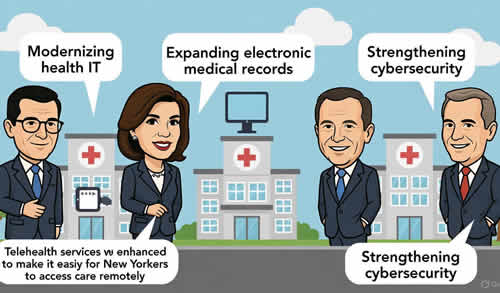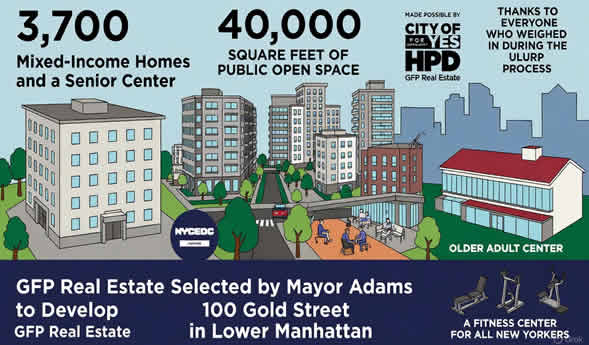Launched in August 2024, New York City’s Partnership Assistance for Transit Homelessness (PATH) marks its first year on October 10, 2025, with over 20,100 engagements on the subway system, delivering critical services 6,100+ times and connecting nearly 1,900 unhoused New Yorkers to shelter. As part of Mayor Eric Adams’ Subway Safety Plan and the “End the Culture of Anything Goes” campaign, PATH pairs NYPD Transit officers with DSS/DHS nurses and NYC Health + Hospitals clinicians for targeted overnight outreach, while NYPD has also removed 2,100+ individuals for rules violations. Complementing 24/7 HOME-STAT efforts, the initiative builds on historic investments — including 1,500 new Safe Haven/stabilization beds (now 4,000 total) and a $650M mental-health and homelessness plan — alongside 2025 state law changes easing access to psychiatric care and a proposed 2026 Compassionate Interventions Act. The result: safer subways, stronger outreach, and more New Yorkers connected to lasting care.
Mayor Adams Celebrates One-Year Anniversary of Path Co-Response Program Connecting New Yorkers in Need on Subways to Shelter, Health Care, and Support
– New York City Mayor Eric Adams, New York City Police Department (NYPD) Commissioner Jessica S. Tisch, and New York City Department of Social Services (DSS) Commissioner Molly Wasow Park today celebrated the one-year anniversary of the Partnership Assistance for Transit Homelessness (PATH) program — a public safety and social services co-response outreach initiative, launched in August 2024, to help keep New Yorkers safe and healthy on the subway system. The PATH teams have made over 20,100 engagements with unhoused New Yorkers living in the subway system, delivering critical services — including shelter, meals, medical care, and mental health support — more than 6,100 times. Additionally, NYPD Transit Bureau officers, working alongside PATH clinicians, have removed more than 2,100 individuals from the transit system for various violations of the Metropolitan Transit Authority’s (MTA) rules of conduct or state law.
Today’s announcement builds on Mayor Adams’ “End the Culture of Anything Goes” campaign, the administration’s landmark effort to change the culture and laws that prevented people with severe mental illness from getting the help they needed. This initiative simultaneously makes the investments necessary to support outreach, harm reduction, wraparound services, and housing — to make lasting impacts on lives and communities, and improve New Yorkers’ quality of life. Mayor Adams is bringing the same energy and approach that proved to be successful in carving a new path for people with severe mental illness to address other health crises playing out on city streets, like drug addiction, and he recently laid out plans realize that vision by connecting those suffering with treatment.
“Keeping New Yorkers safe is our number one commitment — especially on the subways, which millions of riders rely on every day,” said Mayor Adams. “Today, we are proud to celebrate the one-year anniversary of our PATH program, which has already connected thousands of New Yorkers in need on our subways to critical services. When we took office, we made it clear: the days of ignoring people in need on our streets and in our subways were over. And since then, our administration has fundamentally changed the conversation on severe mental illness and fought to end the culture of ‘anything goes.’ Our PATH program shows that compassion, public safety, and justice must all go together — and this anniversary marks an important milestone in making New York City just that: more kind, more just, and safer for everyone.”
PATH teams bring together NYPD Transit Bureau officers, New York City Department of Homeless Services (DHS) nurses, and outreach staff from NYC Health + Hospitals to connect New Yorkers to services, including shelter, meals, medical care, and mental health support. From 8:00 PM to 12:00 PM the next day, teams conduct targeted outreach across Manhattan stations and trains, engaging anyone who appears to be unsheltered.
The program is part of the city’s growing use of “co-response” — a crisis response model gaining traction nationally in which clinical professionals are paired with police to engage with members of the public in need of medical care and/or social services. Participating police officers receive specialized training in crisis de-escalation and allow their clinical partners to take the lead once safety is assured. While co-response is not meant to replace traditional outreach conducted without police involvement, in certain situations, the presence of police officers affords clinicians a greater sense of personal safety, enabling more meaningful engagement with those in need. Co-response also greatly enhances the ability of a clinician to initiate transport to a hospital for evaluation in circumstances where an individual exhibits symptoms of mental illness presenting a danger to themselves or others.
Co-response offers tailored support based on each person’s needs — from a hot meal and a bed for the night to medical attention or psychiatric evaluation — improving both the safety and effectiveness of outreach efforts and increasing the changes of connecting people to lasting care.
“Strengthening interagency collaboration through initiatives like PATH is vital to expanding the scope of the city’s outreach efforts and increasing reliance on social workers to ensure meaningful engagements with New Yorkers experiencing homelessness,” said DSS Commissioner Wasow Park. “We are grateful for the dedication of our outreach workers and nurses who always lead with dignity and compassion as they engage New Yorkers who have fallen through every safety net, building trust and connecting them to life-saving supports. We are committed to leaving no stone unturned in our efforts to reach and support some of our most vulnerable neighbors and improve health care and housing outcomes for them.”
“The PATH program is a critical initiative to address homelessness and other quality of life conditions in our subway system, and one year later, the results of this whole-government approach speak for themselves,” said NYPD Commissioner Tisch. “Thousands of New Yorkers are getting access to the resources they need and deserve, and transit crime is at record lows across the city. None of this is by accident — it’s because of the incredible work of the NYPD, DSS, DHS, and NYC Health + Hospitals that have all provided this important care, and Mayor Adams who has always put the safety of our city first.”
“We’ve known all along that more effective mental health outreach and treatment were needed in our subway system to help cut down on transit crime and deal with disorder underground,” said MTA Chair and CEO Janno Lieber. “Thanks to investments from Governor Hochul and Mayor Adams, we’ve made progress on both fronts — as proven out by surging ridership and customer satisfaction.”
Addressing transit crime and homelessness in the subway system has been one of Mayor Adams’ top public safety priorities since taking office. In February 2022, Mayor Adams first launched the Subway Safety Plan to address public safety concerns, protect riders, and connect some of the city’s hardest-to-reach New Yorkers to services. Since the start of the plan, over 8,600 New Yorkers have been connected from the subways to shelter, with over 1,000 now in permanent, affordable housing. These outreach efforts, along with others, such as Subway Co-Response Outreach Teams (SCOUT), encounter a range of people living unsheltered with various needs.
In the fall of 2022, Mayor Adams and New York Governor Kathy Hochul deployed an additional 1,200 police officers to subway platforms and trains each day. Following the end of that deployment, in 2023, Mayor Adams again directed the NYPD to surge an additional 1,000 police officers into the subway system each day to help keep New Yorkers safe and bring overall crime in the transit system down. In January 2025, in partnership with the Adams administration and Governor Hochul, the NYPD began deployment of two police officers on every train during overnight hours, seven days per week.
These safety efforts together are delivering indisputable results: overall transit crime fell 17 percent in September compared to the same month last year — the lowest level for any September in recorded history, excluding the 2020 and 2021 pandemic years. This follows record low major crime in transit for July and August, excluding the pandemic years.
PATH complements the city’s 24/7 above-ground HOME-STAT outreach efforts — one of the most comprehensive outreach programs in the nation — which have also resulted in vital connections to shelter services for thousands of New Yorkers experiencing unsheltered homelessness across city streets, parks, and other public places. As of today, DSS has approximately 400 outreach staff canvassing the five boroughs around-the-clock; this includes a reliable network of contracted outreach workers from not-for-profit human services providers with extensive experience addressing unsheltered homelessness.
Throughout his administration, and as laid out in “Care, Community, Action: A Mental Health Plan for NYC,” Mayor Adams has been committed to taking a public health approach to supporting people with severe mental illness, focusing on prevention and intervention.
That Adams administration has opened 1,500 new low-barrier Safe Haven and stabilization beds for New Yorkers — bringing the total to 4,000 — and invested in innovative mental health programs like SCOUT, the opening of 13 new Clubhouses, and expanded Intensive Mobile Treatment teams.
Additionally, earlier this year, in his State of the City address, Mayor Adams announced a historic $650 million plan to tackle homelessness and support people with severe mental illness by dramatically expanding the city’s capacity to serve people experiencing unsheltered homelessness, as well as offering supportive, home-like environments to patients with serious mental illness who are ready for discharge from the hospital but do not yet have a place to go through “Bridge to Home,” a new innovative transitional housing model.
Finally, the Adams administration also successfully advocated for changes to state law, passed in 2025, that remove barriers to psychiatric care for those unable to recognize their own need for it, alongside increased transparency through public reporting of involuntary hospital transport data.
Building off all this work, in August, Mayor Adams announced a new change he is proposing in the 2026 state legislative session to support people struggling with substance use disorder and address public drug use on city streets that degrades quality of life and leaves a feeling of disorder among many city residents. The “Compassionate Interventions Act” will give clinical professionals the authority they need to bring someone who appears to pose a danger to themselves or others due to substance use disorder to a hospital and allow a judge to mandate treatment if the person is unwilling to enter treatment voluntarily. The change would help put New York in line with 37 other states that authorize involuntary commitment for substance use disorder as it builds on Mayor Adams’ successful work since the start of the Adams administration to address the interwoven crises of severe mental illness, addiction, and homelessness playing out on city streets.
By combining targeted enforcement with compassionate, evidence-based outreach, the PATH program and broader Subway Safety Plan — along with these other public safety, public health, and housing plans — are delivering safer subways, stronger communities, and better futures for New Yorkers.
October 10, 2025 NEW YORK
Sources: NYC.gov , Big New York news BigNY.com
Midtown Tribune News










